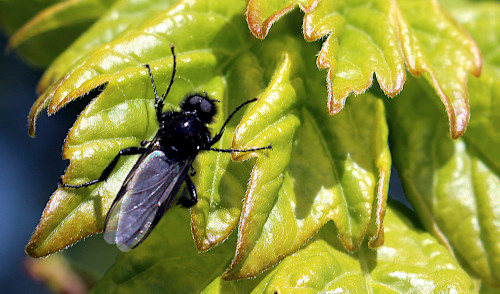This week has seen the celebratory days of two saints. The first, on April 23rd, was that of St George, the patron saint of England. St George was an interesting character of Greek and Turkish origins revered in several countries across Europe and beyond. He is best known for his legendary feat of slaying that mythical flying beast, the dragon.
The second and less well known saint’s day was two days later on April 25th, the feast of St Mark. Also known as St Mark the Evangelist, his emblem is another mythical flying creature, the winged lion. This symbol is often used as a heraldic device in English Coats of Arms and flags. Interestingly, two English national symbols, the cross of St George and the winged lion of St Mark are both depicted as heraldic quarters in the flag of the Italian Navy.
Another national event linked with one of the saints also happens at this time of year: the emergence of the fly with the scientific name Bibio marci. In some years, this harmless black fly blooms and swarms by the million for a few days in spring. Traditionally, the adult flies emerge on April 25th which is why they are commonly known as St Mark’s fly.

The larvae of St Mark’s fly overwinter in the soil where they eat roots and decaying vegetable matter. In spring, the glossy black male flies emerge followed soon after by the females with which they mate. Adult flies eat pollen and nectar and are important pollinators.
So far this year, there have been only a few St Mark’s flies about, but the one shown in the photo here was taken on St Mark’s day on a hedge maple leaf along the footpath by King’s Beck at the edge of Tuttington.